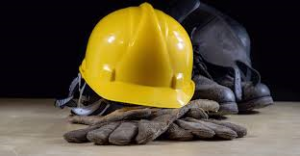
PPE is designed to protect workers from workplace hazards and risk but PPE doesn’t last as long as you’d think. Once you have the equipment, your job isn’t over! It all depends on how often your PPE is used and in which conditions. PPE is provided by employers and needs to be inspected regularly to measure and test safety, but who should be in charge of carrying out those checks and determining when replacement is necessary? Is it the employer? The department manager? Or should there be employee PPE responsibilities? The easiest answer is that there should be a dedicated employee or team of employees who are responsible for each type of equipment.
Assigning an important task to your employees helps them take ownership of their well-being and safety. Of course, ultimately, it’s the employer’s responsibility to provide a safe work space through correct health and safety procedures and measures but having someone responsible for routine checks is a good idea with a more overarching view taken on, say, a quarterly basis.
Consider having a monthly check on all PPE that is given to employees. Inform employees that any damaged items are reported immediately, and all damaged equipment is replaced before the employee returns to work.
A Good PPE Program:
- Conducts a Workplace Survey
- Assesses Safety Measures
- Selects Appropriate Controls
- Selects the Right Equipment
- Conducts Fit Tests
- Trains Employees on Equipment Use
- Offers Management Support
- Maintains and Stores Equipment Correctly
- Audits the Programme RegularlyAlways keep a stock of equipment on your premises. That way if equipment needs replacing, you can replace it quickly and safely. But keep in mind that some types of equipment can break down over time even if they’re unused (like hard hats and dust masks), but that’s only for equipment that has a date stamp on it.
- It’s important to create a culture of responsible PPE use in the workplace. Having well stocked supplies and employees seeing the regular deliveries of new equipment will generate a sense of responsibility. When employees see a lack of commitment to PPE on the employers part (i.e. not regularly restocked and not up to regulation standards) they are much less likely to have that same motivation to implement a safe environment for themselves or others. Lead by example – you want to set a great example for your employees and demand that safety is taken seriously. If you do not adhere to safety standards it costs both you and your employee money – perhaps in sick days, compensation, or lost time at work.
- If your employee reports faulty equipment and you do not replace it, then you are responsible. Make sure your employee knows that reporting damaged equipment is key for their safety.
A brief guide can be found here http://www.hse.gov.uk/pubns/indg174.pdf
Contact us for further information.